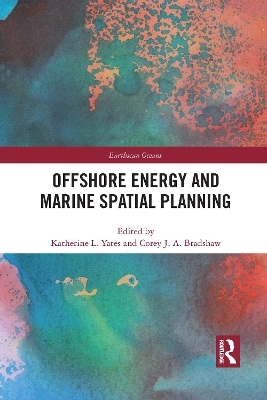
Offshore Energy and Marine Spatial Planning
Routledge (Verlag)
978-0-367-50850-0 (ISBN)
The generation of offshore energy is a rapidly growing sector, competing for space in an already busy seascape. This book brings together the ecological, economic, and social implications of the spatial conflict this growth entails. Covering all energy-generation types (wind, wave, tidal, oil, and gas), it explores the direct and indirect impacts the growth of offshore energy generation has on both the marine environment and the existing uses of marine space.
Chapters explore main issues associated with offshore energy, such as the displacement of existing activities and the negative impacts it can have on marine species and ecosystems. Chapters also discuss how the growth of offshore energy generation presents new opportunities for collaboration and co-location with other sectors, for example, the co-location of wild-capture fisheries and wind farms.
The book integrates these issues and opportunities, and demonstrates the importance of holistic marine spatial planning for optimising the location of offshore energy-generation sites. It highlights the importance of stakeholder engagement in these planning processes and the role of integrated governance, with illustrative case studies from the United States, United Kingdom, northern Europe, and the Mediterranean. It also discusses trade-off analysis and decision theory and provides a range of tools and best practices to inform future planning processes.
Katherine L. Yates is a Lecturer at The University of Salford, United Kingdom, specialising in spatial planning, distribution modelling, and stakeholder engagement. She is also a National Environmental Research Council Knowledge Exchange Fellow working with the United Kingdom Marine Management Organisation. Corey J. A. Bradshaw is Matthew Flinders Fellow in Global Ecology and Professor in the College of Science and Engineering at Flinders University in Adelaide, Australia. His research is mainly in the area of global-change ecology—how human endeavour and climate fluctuations have altered past, present, and future ecosystems.
Introduction: Marine spatial planning in the age of offshore energy 1. Marine spatial planning: an idea whose time has come 2. Methods and utility of ecosystem service trade-off analysis for guiding marine planning of offshore energy 3. It starts with a conversation: achieving conservation goals in collaboration with the offshore energy industry 4. Challenges and opportunities for governance in marine spatial planning 5. Legal aspects of marine spatial planning 6. Displacement of existing activities 7. Tracing regime shifts in the provisionof coastal-marine cultural ecosystem services 8. Environmental implications of offshore energy 9. Meaningful stakeholder participation in marine spatial planning with offshore energy 10. Capturing benefits: opportunities for the co-location of offshore energy and fisheries 11. Compatibility of offshore energy installations with marine protected areas 12. Marine spatial planning and stakeholder collaboration: advancing offshore wind energy and ocean ecosystem protection in New England 13. Co-locating offshore wind farms and marine protected areas: a United Kingdom perspective 14. Conservation challenges in the face of new hydrocarbon discoveries in the Mediterranean Sea 15. Siting offshore energy arrays: a case study using interactive marine planning 16. The future of marine spatial planning
| Erscheinungsdatum | 02.04.2020 |
|---|---|
| Reihe/Serie | Earthscan Oceans |
| Zusatzinfo | 8 Tables, black and white; 6 Line drawings, black and white; 24 Halftones, black and white; 32 Illustrations, black and white |
| Verlagsort | London |
| Sprache | englisch |
| Maße | 156 x 234 mm |
| Gewicht | 476 g |
| Themenwelt | Technik ► Elektrotechnik / Energietechnik |
| Technik ► Umwelttechnik / Biotechnologie | |
| ISBN-10 | 0-367-50850-8 / 0367508508 |
| ISBN-13 | 978-0-367-50850-0 / 9780367508500 |
| Zustand | Neuware |
| Haben Sie eine Frage zum Produkt? |
aus dem Bereich


